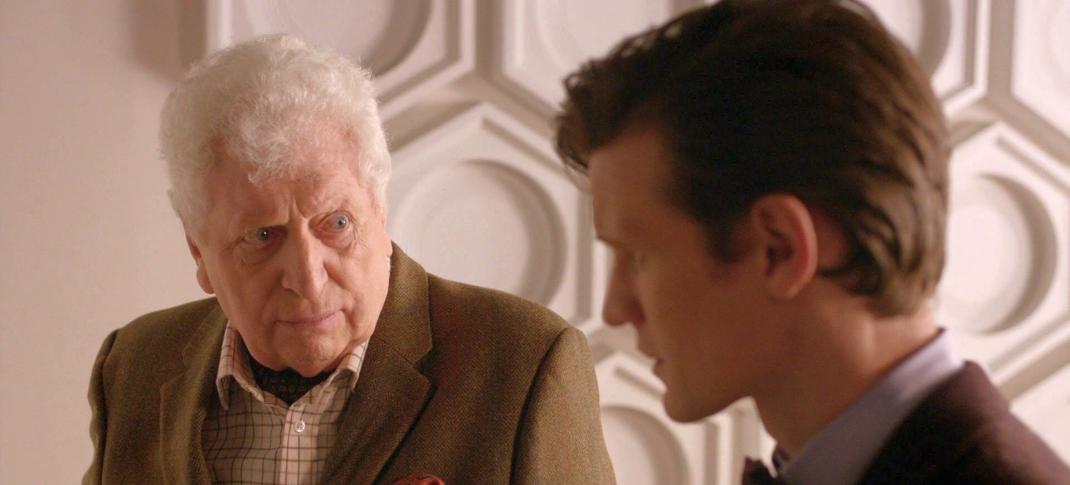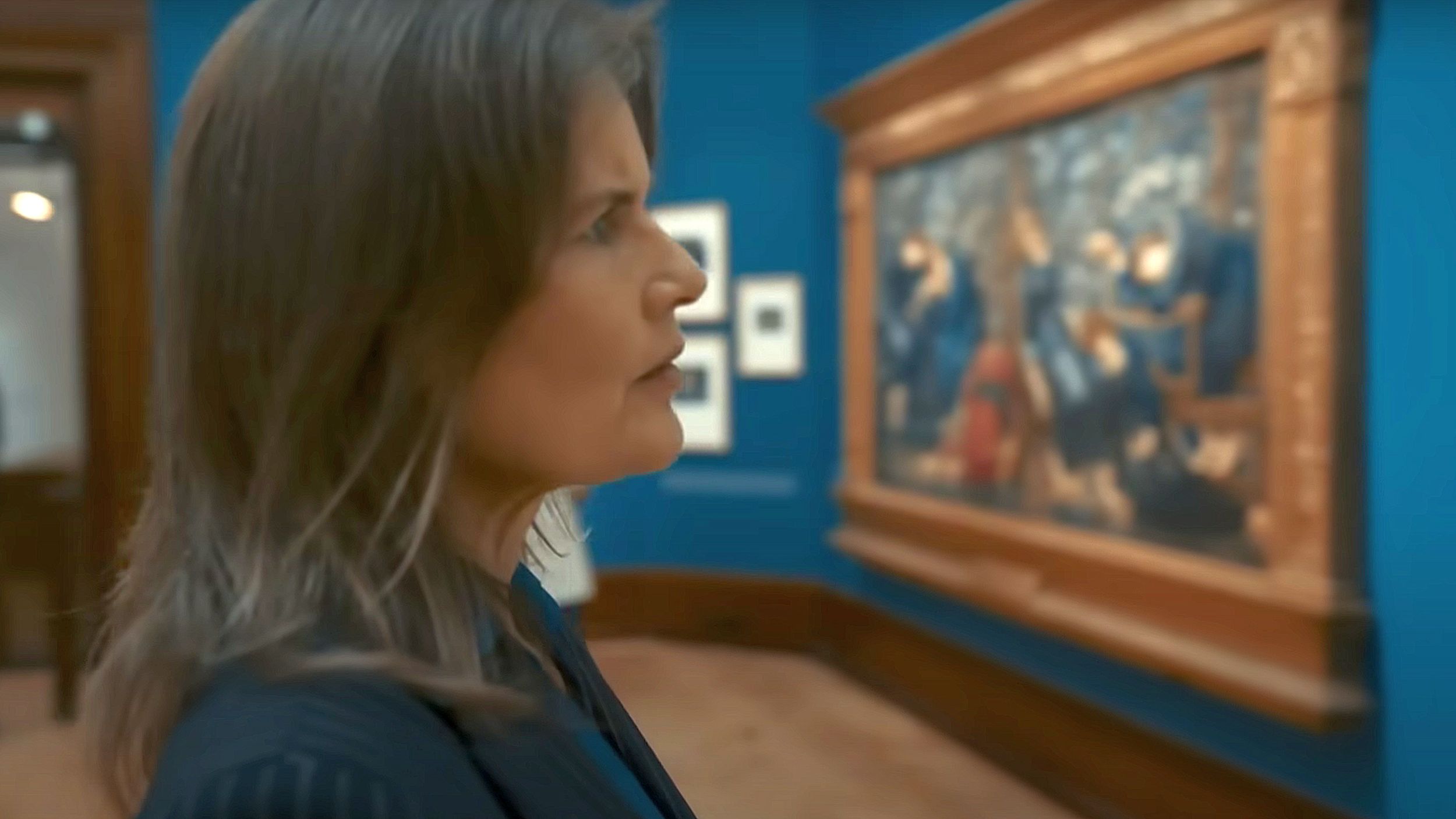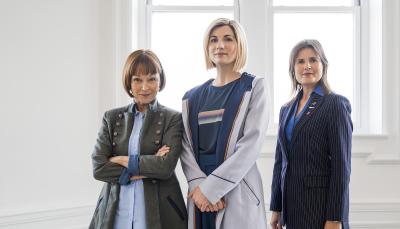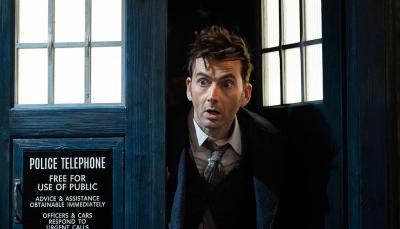What 'Doctor Who' Can Teach Us About Museums

Tom Baker as 'The Curartor' and Matt Smith as the Eleventh Doctor in the 'Doctor Who' 50th Anniversary special, "The Day of the Doctor"
BBC/BBC America
Anyone familiar with the British TV landscape likely remembers the time almost exactly 10 years ago when BBC staple Doctor Who celebrated its 50th anniversary with the dazzling episode “The Day of the Doctor.” Between all the cameos and callbacks, one element that held the whole episode together often goes unmentioned: the museum setting. As we approach the show’s highly anticipated 60th anniversary this November, it is worth taking a tour through the show’s recent past to understand why museums resonate so strongly with the themes of the show and what Doctor Who can teach us about museums in our world.
Museums have been a touchstone for Doctor Who for almost as long as the show has existed. As far back as the show’s second season in 1965, the four-part story “The Space Museum” saw the First Doctor and his companions on display in a museum exhibit on another planet. In the most recent episode, “The Power of the Doctor,” a museum served as the catalyst for bringing former companions Tegan and Ace together on a search for missing paintings.
Museums appear the most often during Matt Smith’s tenure as the Eleventh Doctor. They are focal points in four Eleventh Doctor stories: “The Time of Angels,” “Vincent and the Doctor,” “The Big Bang,” and, of course, “The Day of the Doctor.” These seasons explore themes of childlike wonder, the malleability of history, and the importance of memory, all ideas that museums represent perfectly.
'Time Of The Angels"
In “The Time of Angels,” the Doctor and his companion Amy find themselves in the largest museum in the universe. The Doctor recognizes some familiar objects on display, and Amy notes that the Doctor must love museums because “they’re how you keep score.” The Doctor isn’t the only person keeping score via the museum. Museums today are reckoning with the fact that they have historically served as trophy cases for colonial powers at the expense of the cultures who created the artifacts on display. Whether consciously or not, Doctor Who engages with both the good and the bad of museums.
“Vincent & The Doctor”
Just as museums have been used to construct colonial and national identities, they can also help people form individual identities. In the much-beloved episode “Vincent and the Doctor,” the Doctor and Amy bring Vincent Van Gogh to the present day to see his art in a museum. This demonstrates the power that museums have to legitimize or delegitimize a person or group’s history. People can feel empowered when they see themselves reflected in a museum. Vincent, Amy, and the Doctor all have an emotional response to seeing his art on display as it reflects their personal experiences — albeit a little more literally than for most museum-goers.
"The Big Bang"
The Season 5 finale, “The Big Bang,” is set almost entirely in a museum, where Amy’s younger self sees objects on display from her future travels with the Doctor. The museum is used as a shorthand to show how Amy’s life resonates throughout the history of the universe and the wonder she experiences in her time with the Doctor. Amy’s experiences in “Vincent and the Doctor” and “The Big Bang” are heightened versions of what any person can experience at a museum: a personal connection with an object that can teach us about ourselves.
"The Day Of The Doctor"
This brings us back to “The Day of the Doctor,” perhaps the most salient example of a museum in all of Doctor Who. In this episode, the Doctor makes a life-changing revelation about his past and his home planet thanks to a painting in a museum. It is implied that someday in the future, he becomes the curator who put that painting there for himself to find. Once again, that personal connection forged with a museum object is represented on a larger scale. Curators choose and place objects intentionally in the hopes that they will inspire reflection in visitors.
Because museums have the power to influence how we see ourselves and our world, they have a responsibility to wield that power carefully. Many museums and museum professionals today are working to counteract the harm that museums have caused through their ties to colonialism. The museum field is currently engaging in a bit of its own kind of time travel, imagining a future where museums are more inclusive and community-based and where all people can connect with the objects on display.
At their very best, museums are where we can go to experience time travel. Objects from different eras and different places can all appear in one gallery and can help us more fully see our place in the universe. Museums are, perhaps, the closest thing we have to a TARDIS.





